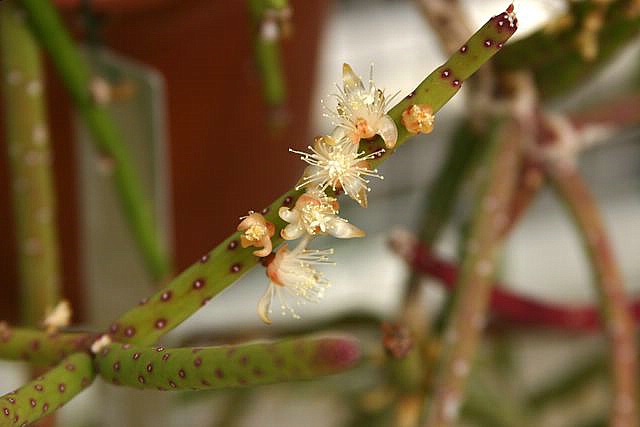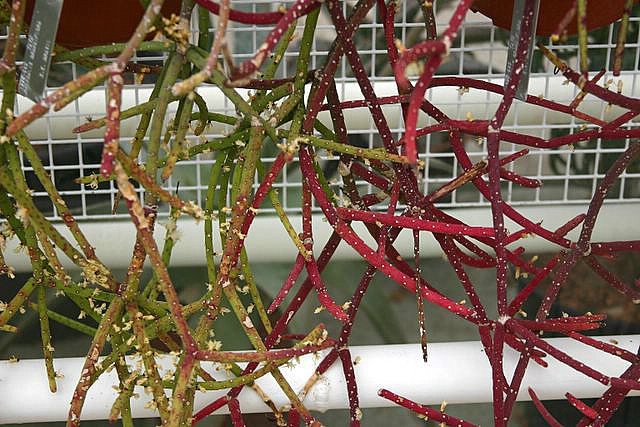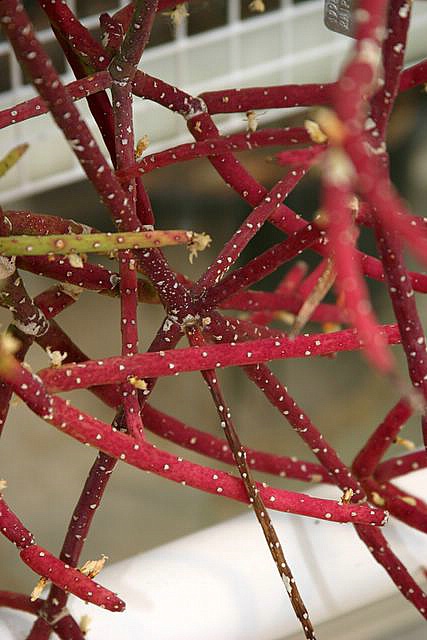|
Rhipsalis grandiflora Haworth, Suppl.
Pl. Succ. 83. 1819
|
|
R. grandiflora (copyright KAF Kew 2006) |
Desc from B&R 1923
DISTRIBUTION. Brazil (W Rio de Janeiro, Sao Paulo, Parana, Santa Catarina): epilithic and epiphytic on coastal rocks and in Atlantic and seasonal forest, near sea level to c. 1200 m altitude. Left to right: Loefgren drawings: grandiflora & hadrosoma. Notes from Bradleya 13 (1995) The name R. grandiflora is used here with some reluctance, since Haworth, l.c., who in his preface acknowledges the help freely given by Kew in providing plants for him to diagnose, appears to have been ignorant of the origin of the material of this species, which is rather surprising (his book is even dedicated to Aiton, the curator at Kew). However, when illustrating the plant some seven years later, Hooker (l.c.) seems to have been in no doubt that this was Haworth's species, and likewise subsequent authors, although some have used the homotypic R. funalis (Sprengel) De Candolle in preference to Haworth's priorable name. In consequence of earlier held doubts, one of us (N.P.T.) has annotated specimens in various herbaria and living collections as R. hadrosoma Lofgren (drawing above left opens in a new window), a more clearly typified synonym of R. grandiflora. This species is placed here on account of its strong similarity in stem-morphology and mode of flower-bud development to other species of Subg. Rhipsalis (especially R. lindbergiana), but differs in lacking shoots of indeterminate growth. In this respect its position exactly parallels that of R. neves-armondii within Subg. Calamorhipsalis, with which species it is convergent in its unusual combination of vegetative characters (all stem-segments of determinate growth but apical composite areoles lacking). Desc from Hunt 2006.
R. robustaR. robusta Lemaire is a flat-leafed species with wide leaves. Joints are three-angled. Three to five flowers can grow at the areoles. Pale yellow flowers, white fruit. Rio de Janiero. R. hadrosoma: see R. hadrosoma info
|


